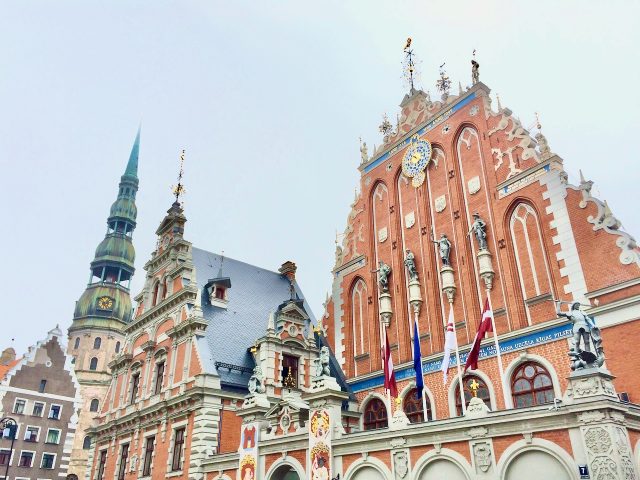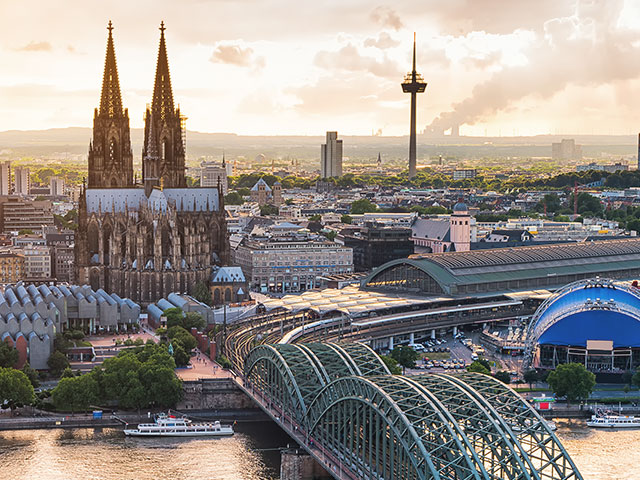How do I arrive to Alcalá de Henares?
- Train: there are trains each 5-10 minutes to Alcalá de Henares (aprox. 45 minutes), in line C2 and C7, from Atocha Railway Station for 2.60€ (one way) in Madrid. There are also Media Distancia trains stopping in Alcalá de Henares in their way to Madrid like Soria (aprox. 2.5 hours) or Zaragoza (aprox. 4 hours) ones, this latter via Guadalajara (aprox. 20 minutes).
- Bus: there are buses each 2 hours to Madrid (aprox. 40 minutes) from Alcalá de Henares Bus Station reaching Avenida de América Bus Station. There are also buses to Soria (aprox. 3 hours) and to Zaragoza (aprox. 3 hours 30 minutes) via Guadalajara (aprox. 20 minutes).
- Car: if you rented a car, it's 25 minutes from Nuevo Baztán, 30 minutes journey from Guadalajara, 45 minutes journey from Madrid, 40 minutes from Toledo and 50 minutes from Aranjuez.
History
What can I visit in Alcalá de Henares?
- University of Alcalá (only available with guided tour; 6€/ 4€ adults/ reduced): 16th century collegiate building built for Cardinal Cisneros. Its façadade was done by Gil de Hontañón, architect of Segovia or Salamanca cathedrals and it has beautiful courtyards. Its auditorium (Paraninfo) is the place where the Miguel de Cervantes Prize (one of the most prestigious awards in Spanish literature) is given. The building also has St. Ildefonso Chapel (12:30-17:30; 2.50€), the oldest part of the University of Alcalá and the place where there's Cardinal Cisneros' mausoleum.
- Oidor Chapel (10-14 and 16-19 Tue-Sat; 10-15 Sun; free): former chapel of St. Mary Church, a 16th century church which was destroyed during the Spanish Civil War. Nowadays it's an expositions center and has baptismal font where Cervantes was baptised. Nearby can be found St. María Church Tower (11-14 Thu-Sat; 16-19 Sun; free) with great views of the center of Alcalá de Henares. There's a combined ticket for St. Mary Tower, the Roman town of Complutum and Hippolytus House for 2€.
- Corral de Comedias in Alcalá (only available with guided tour; 3€): this building is the oldest corral de comedias in Spain, dating back to the 17th century. It has been remodeled several times and it's still on use.
- Latin American Art Museum of the Univeristy of Alcalá (10-14 and 16-20 Tue-Sat; 12-15 Sun; free): museum with works of arts from 1950s to the 21st century in Latin America which were bought by Luis González Robles.
- Cervantes Birthplace Museum (10-18 Tue-Fri; 10-19 Sat-Sun; free): reconstruction of the house where Miguel de Cervantes is said to be born. The house was rebuilt, decorated with 16th-17th century styles and has many biographic information about Cervante's childhood. The museum also has a wide collection of Don Quixote in many languages and from different ages.
- Sts. Justo y Pastor Cathedral (10-13:30 and 16-18:45 Mon-Sat; 17-18:45 Sun; 1€): 16th century Isabelline Gothic cathedral in Cardinal Cisneros times. It was the only church together with St. Peter's Church in Leuven where all its priests had to be doctors in theology; here it's buried Cardinal Cisneros. The cathedral also has a tower (2€) where going up and enjoying the views.
- Archbishop Palace of Alcalá de Henares (only available with guided tour): palace placed in a former Mudejar fortress which was used by the archbishops of Toledo when they visited the city of Alcalá de Henares. It has also had many other uses like General Archive, Court of Audits and now it's Alcalá de Henares diocese base. In the palace was born Catherine of Aragon, the first wife of Henry VIII.
- Regional Archeological Museum of Madrid (11-19 Tue-Sat; 11-15 Sun; free): museum with the most important collection of archeological discoveries in the region of Madrid. Among the most important ones there are mosaics found in Complutum, medieval pottery or expositions about archeology. It also has temporary expositions.
- Old Hospital of St. Maria la Rica (11-14 and 18-21 Tue-Sat; 11-14 Sun; free):13th or 14th century hospital which is used for temporary expositions. It's also the culture councillorship headquarters.
- Laredo Palace (10-13:30 and 16-18:30; 1€): 19th century Neo-Gothic and Mudejar palace built by a former mayor of Alcalá. Currently it's used as library of Alcalá University and Cisneros Museum.
- Alcalá Open-Air Sculpture Museum: more than 50 statues collection with different artists from Spain, Europe and the whole world and also different styles.
- Outside the center of Alcalá de Henares there's the Roman town of Complutum (10-14 and 17-20 Tue-Sun from Apr to Sep; 10-14 and 16-18 Tue-Sun from Oct to Mar; 1€). This settlement was already inhabited by Carpetani before Roman times but its development occured under Rome, being an important city in the way between Caesaragusta (Zaragoza) and Emerita Augusta (Mérida); its decline started with the Visogoths and Complutum was abandoned. One of the most important buildings are Hippolytus House and House of the Griffins.
 |
| Façade of Alcalá University |
| Cervantes Birthplace Museum |
| Añadir leyenda |








 14:59
14:59
 Banknotemaniac
Banknotemaniac
 Posted in:
Posted in: